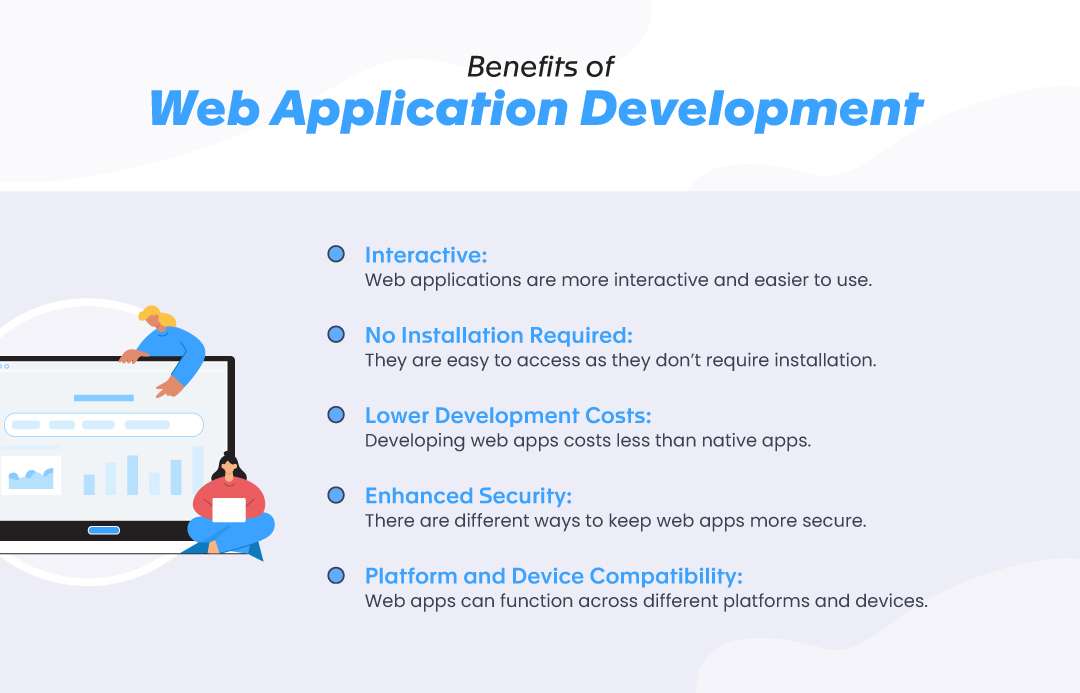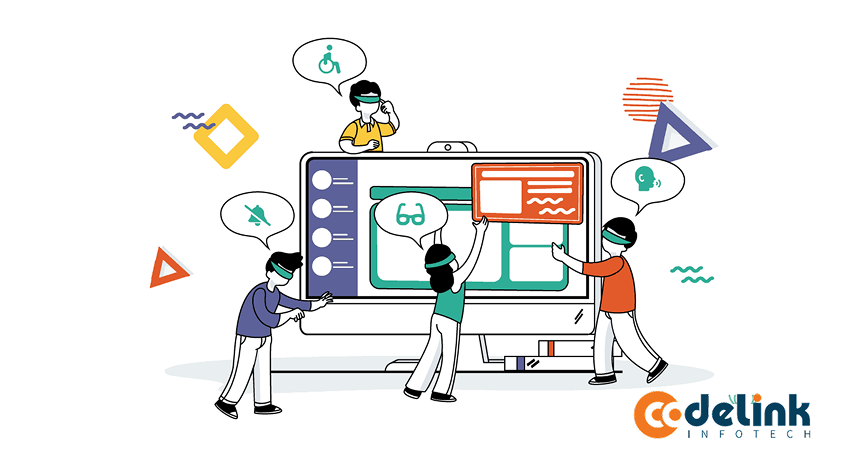As a flourishing enterprise, you should never overlook a chance to expand. In recent times, the boundless possibilities and advancement of the web and technology have made this achievable. Web application creation and mobile applications continue to dominate the marketplace. Yet, the former is often underestimated.
In the dazzling world of mobile apps, entrepreneurs frequently undervalue the advantages web apps can offer. Curious to learn more?
We’ve crafted this engaging guide to web app development for 2022 and beyond. Discover how this empowers you to tackle contemporary business challenges effectively. Also, gain insights into leveraging top-tier services for your organization’s progress and seamless operations.
Although the adoption of web apps has soared, many in the industry remain unaware of their value. Let’s start with the fundamentals.
What is a Web App?
Web applications are interactive solutions built with technologies such as CSS, HTML, and JavaScript. These apps are hosted on remote servers and accessed through browsers over the Internet. Web apps serve diverse functions and can be tailored for individual users or entire organizations.
Because users access web applications via a network, there’s no need for downloads. Additionally, an application server, web server, and database are essential for web apps to function. Servers handle and fulfill client requests, while databases store data.
Web applications have shorter development timelines, making them easier to manage with smaller teams. Building web apps is only slightly different from website development. Many popular online services that appear as websites are, in fact, web-based applications.

We’ll discuss the development process and technology stacks later. For now, let’s explore further.
Types of Web Apps
If you’re here, you’re likely seeking web application development solutions for your company. It’s helpful to understand the various types of web apps to determine what suits your needs. The main categories include:
Progressive Web Apps (PWAs)
Progressive web apps are cross-platform, web-based applications featuring the latest browser APIs. They’re developed using progressive enhancement techniques to deliver a native app-like experience.
PWAs can load and update information even without an internet connection. They utilize various technologies and standard practices. HTML, CSS, and JavaScript are the most common tools for building these apps.
Read More: Difference between PWA vs Native Apps
Static Web Apps
Static web apps display content directly in the user’s browser. Typically, these are built using HTML and CSS frameworks. However, updating or changing information on these pages is challenging. Users must refresh the page to view updates.
Dynamic Web Apps
Dynamic web apps are created with server-side programming, making them more interactive. These apps use content management systems (CMS) to update content dynamically.
Netflix is a prime example of a dynamic web app. It skillfully personalizes user recommendations based on previous searches and saved items.
Ecommerce Web Apps
Global markets have witnessed a surge in Ecommerce activity in recent years. In 2022, retail Ecommerce sales are projected to reach 5.4 trillion US dollars. If you aim to launch an Ecommerce venture, a web app can greatly streamline your operations.
These apps provide smooth shopping experiences for customers and scalability for business owners. Custom web application development for your Ecommerce platform can boost its performance.
Portal Web Apps
Portal web apps enable organizations and users to access secure pages with tailored interfaces to meet specific needs. These features are valuable for payment gateways, shopping platforms, and more.

Web App Development Process
It’s natural and important to ask a web application development provider about their process for building successful apps. You should understand each phase to ensure you receive an exceptional business application. Every development firm has its own approach. Here are the steps we consider essential:
Step 1- Define the Purpose of Your Web App
Every app should address a specific need. Without a clear purpose, developing an app is futile. If an application doesn’t deliver value to your target audience, it wastes time, effort, and resources. So, before starting development, clarify why your business requires a web app.
Step 2- Research and Plan Workflow
Next, decide how your app should function and what features it must include. It’s crucial to analyze competitors before strategizing. Consult a custom web application development provider.
However, your app concept should be well-defined from the outset. You can then seek expert input to refine it. Also, ensure you have a set budget in mind.
Step 3- Engage Web App Developers
You need to hire specialists to build your web application unless you have an internal development team. Codelink Infotech can connect you with highly skilled web app developers. We follow a transparent, forward-thinking approach to deliver robust applications within a reasonable budget.
Step 4- Create a Wireframe and Prototype
With your chosen developers and designers, it’s time to turn your workflow into a wireframe. Design a prototype and finalize your web application’s appearance. Gather feedback on your wireframe and make adjustments as needed. Ultimately, users should enjoy the web app.
Read More: Prototype vs MVP
Step 5- Select Tools and Technologies for Web App Development
A robust tech stack and the right tools can elevate your web applications. Use the latest and most effective technologies to bring your ideas to life. See the guide below for the most popular technologies in web application development.

Step 6- Test Your Web App
Many overlook that testing is an ongoing process. You should test your applications during and after development. Choose between automated or manual testing, but never skip this step. It verifies your app’s security, performance, functionality, compatibility, and more.
Step 7- Host and Launch
Hosting your web app means running it on a web server. You can purchase a domain or partner with a cloud hosting provider. Requirements will vary based on your choice.
Key Takeaways
Undoubtedly, web applications are becoming an excellent alternative to costly native apps. The future looks promising for these solutions, given their many advantages. Choosing to implement a web application for your services is a smart decision.
Furthermore, at Codelink Infotech, we’re always prepared to support your needs and address your queries. Our custom web application development services can help your business soar.
We trust this concise guide provides you with a clearer understanding of web applications and their development. Be sure to maximize their potential for your organization.













